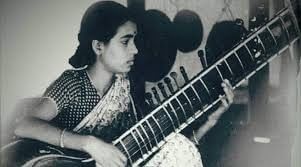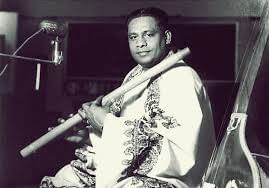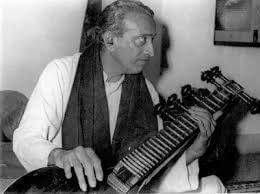SSS 2 Exam > SSS 2 Notes > Physics for SSS 2 > Chapter Notes: Musical Instruments
Musical Instruments Chapter Notes | Physics for SSS 2 PDF Download
| Table of contents |

|
| Introduction |

|
| The Science of Sound |

|
| Making Musical Instruments |

|
| Musicians and their Instruments |

|
Introduction
Music is an essential part of human life. From classical compositions to modern beats, musical instruments play a crucial role in producing sound. Musical instruments are diverse and come from different cultures and regions, each with its own unique style and sound. Understanding these instruments and the science behind sound production helps us appreciate music better. This chapter explores different types of musical instruments, their history, construction, and the musicians associated with them.
The Science of Sound

Vibration
- Sound is produced when an object vibrates.
- These vibrations create sound waves that travel through a medium like air or water to reach our ears.
Resonance
- Resonance makes sound louder by amplifying it.
- For example, in percussion instruments, the hollow body or cavity resonates and increases the sound.
Frequency
- Frequency is the number of vibrations per second.
- Faster vibrations mean higher frequency and higher pitch.
- Example: Tightening the tuning peg of a sitar increases tension and vibration speed, creating a higher pitch.
- The sound of a bat has high frequency, while an elephant’s sound has low frequency.
Timbre
- Timbre is the tone or colour of a sound.
- It changes depending on the material used in making the instrument, how it is built, and how it is played.
- Different instruments have different timbres even when playing the same note.
Making Musical Instruments
- Instrument makers are very important for keeping traditional art forms alive.
- They use scientific principles while making instruments.
- Example process of making a drum:
- A log of wood is shaped into a cylinder.
- The head of the drum is created and fixed onto the wooden body.
- Straps are added to help with tuning.
Musicians and their Instruments
Annapurna Devi — Surbahar

- Annapurna Devi (1927–2018), born Roshanara Khan, was an important figure in Indian classical music.
- She was the daughter of Baba Allauddin Khan of the Maihar Gharana.
- She played the surbahar, also known as the bass sitar, which has deep and resonant tones.
- Surbahar is rare among women as it is physically demanding, but she mastered it.
- She did not perform publicly but was known for her strong commitment to tradition and mastery of ragas.
- Her students included Hariprasad Chaurasia and Nikhil Banerjee, who became famous musicians.
- The surbahar has a deeper and lower tone than the sitar and is suitable for long, elaborate alaap sections.
Pannalal Ghosh — Flute

- Pannalal Ghosh (1911–1960) was a famous bansuri (flute) player and composer.
- He was a disciple of Baba Allauddin Khan and is credited with making the flute a concert instrument in Hindustani classical music.
- As a child, he played a small flute like those used by cowherders, applying what he learned from sitar lessons given by his father.
- At 18, he decided to focus on the flute.
- He realised that a bigger flute would have a better pitch and sound for both classical and light music.
- He experimented with materials like metal and different woods before choosing bamboo.
- He finally settled on a flute that was 32 inches long.
- While working in Calcutta with New Theatres Ltd., he assisted in music production.
- In 1940, he moved to Bombay, where he composed for films like "Sneh Bandhan" and also collaborated with famous musicians for background scores.
- He introduced the seven-hole flute.
Mysore Doraiswamy Iyengar — Veena

- Doraiswamy Iyengar was born in 1920 into a family of Carnatic musicians.
- His father, Venkatesh Iyengar, was a court musician at Mysore, skilled in both flute and veena.
- He started learning veena at age six from his father and later studied under Veena Venkatagiriyappa.
- He developed his own style of veena playing, known as the Mysore Bani.
- He spent his childhood in Gaddavalli, Karnataka.
- He became Asthana Vidvan (royal musician) of the Mysore court at a young age.
- He also taught music to members of the royal family.
- He served as Music Director at All India Radio, Bangalore.
- He received many honours:
- Honorary Doctorate from University of Mysore (1975)
- Padma Bhushan (1983)
- Sangeetha Kalanidhi (1984)
- Sangeetha Kalasikhamani (1994)
- Sangeetha Kalaratna from Bangalore Gayana Samaj
- Chowdiah National Memorial Award
The document Musical Instruments Chapter Notes | Physics for SSS 2 is a part of the SSS 2 Course Physics for SSS 2.
All you need of SSS 2 at this link: SSS 2
|
118 docs|22 tests
|
FAQs on Musical Instruments Chapter Notes - Physics for SSS 2
| 1. What are the different types of musical instruments and how are they categorized? |  |
Ans.Musical instruments can be categorized into four main types: string instruments, wind instruments, percussion instruments, and electronic instruments. String instruments, like the violin and guitar, produce sound through vibrating strings. Wind instruments, such as the flute and trumpet, generate sound by the flow of air. Percussion instruments, like drums and tambourines, create sound through striking or shaking. Finally, electronic instruments, including synthesizers, use electronic means to produce sound.
| 2. How does the science of sound relate to musical instruments? |  |
Ans.The science of sound is fundamental to understanding how musical instruments work. Sound is produced by vibrations, which create waves that travel through air. The pitch of the sound depends on the frequency of the vibrations, while the volume is determined by the amplitude. Different instruments produce unique sounds based on their design and materials, affecting how these vibrations are created and transmitted.
| 3. What historical significance do famous musical instruments have in different cultures? |  |
Ans.Famous musical instruments often reflect the cultural heritage and history of the regions they originate from. For instance, the sitar is deeply rooted in Indian classical music, while the bagpipes have a significant association with Scottish traditions. These instruments not only provide entertainment but also serve as symbols of cultural identity, often used in ceremonies, celebrations, and storytelling throughout history.
| 4. How are musical instruments made, and what materials are commonly used? |  |
Ans.Making musical instruments involves selecting appropriate materials and crafting them to achieve desired sound qualities. Common materials include wood, metal, and plastic. For example, string instruments are often made from hardwoods like maple or spruce, while brass instruments are typically crafted from brass. The craftsmanship and material choice play a crucial role in the overall sound and durability of the instrument.
| 5. Who are some notable musicians and what instruments do they play? |  |
Ans.Notable musicians are often recognized for their exceptional skills on specific instruments. For instance, Yo-Yo Ma is renowned for his cello performances, while Jimi Hendrix is celebrated for his innovative guitar playing. These musicians have not only mastered their instruments but have also influenced genres and inspired countless others through their artistry and contributions to music.
Related Searches














